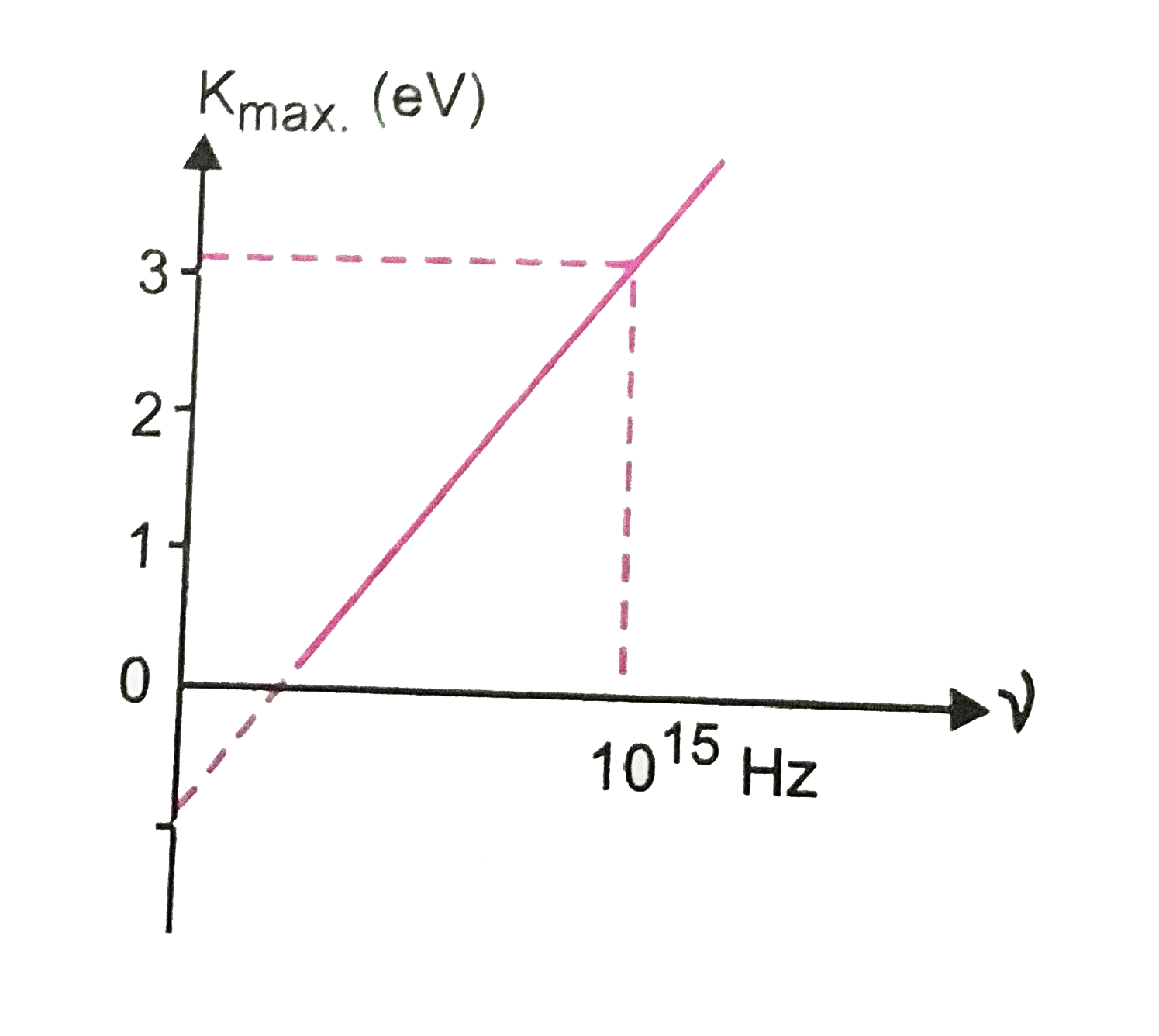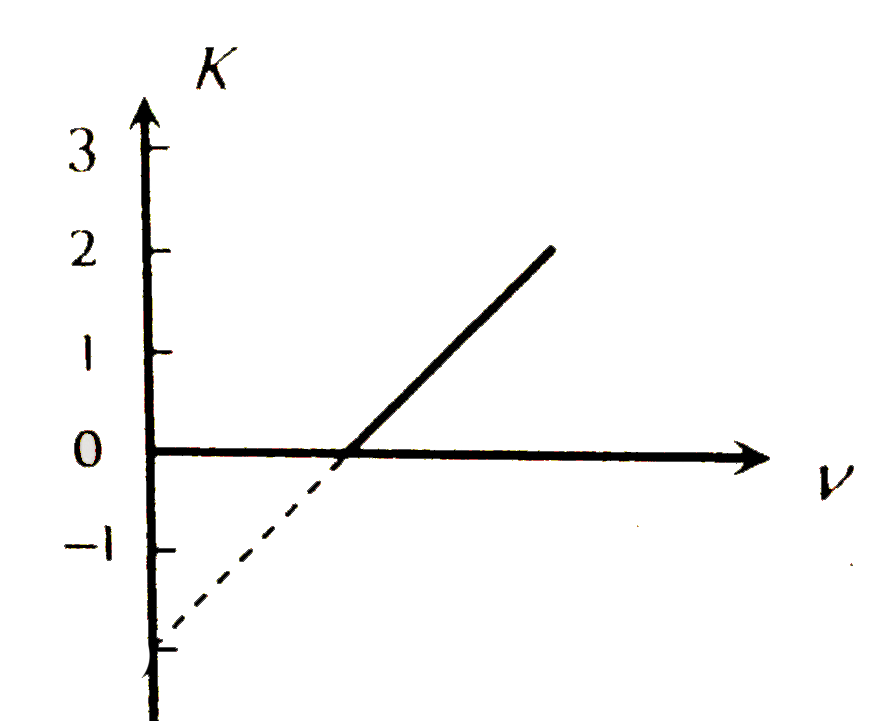Figure represents a graph of kinetic energy of most energetc photoelectrons, Kmax (in eV), and frequency (ε) for a metal used as cathode in

Photoelectric experiment , The threshold frequency of light for the photoelectric emission from the metal is
1×1014 Hz
1.5×1014 Hz
3.1×1014Hz
2.7×1014Hz
The correct Answer is:D
1015 Hx frequency of incident light gives
Kmax=3eVorhυ=Kmax+W
Subsituting values and calculating
⇒4.125eV=3eV+W⇒W=1.125eV
For 4.125 eV the corresponding frequency =1015 HZ For 1.125 eV, the threshold frequency corresponds to
10154.125×1.125=2.72×1014HZ
Topper's Solved these Questions
- PARTICLE NATURE OF LIGHT AND WAVE PARTICLE DUALISMBOOK - MTG-WBJEECHAPTER - PARTICLE NATURE OF LIGHT AND WAVE PARTICLE DUALISMEXERCISE - WB JEE PREVIOUS YEARS QUESTIONS
15 Videos
- OSCILLATIONS AND WAVESBOOK - MTG-WBJEECHAPTER - OSCILLATIONS AND WAVESEXERCISE - WB JEE PREVIOUS YEARS QUESTIONS (CATEGORY 3: ONE OR MORE THAN ONE OPTION CORRECT TYPE (2 MARKS))
2 Videos
- SOLID STATE ELECTRONS BOOK - MTG-WBJEECHAPTER - SOLID STATE ELECTRONS EXERCISE - WB JEE Previous Years Questions (CATEGORY 1 : Single Option Correct Type)
15 Videos
Similar Questions
Kmax (in eV) = 3, and frequency of light (in Hz) =1×1015 for a metal used as a cathode in a photoelectric experiment. The threshold frequency of light for the photoelectric emission from the metal is -
View SolutionCalculate the threshold frequency of photon for photoelectric emission from a metal of work function 0.1 eV.
View Solution
Knowledge Check
represents a graph of most energetic photoelectrons Kmax(in eV) and frequency v for a metal used as cathod in photoelectrons experiment. The threshold frequency of light for the photoelectric emission from the metal is
 A1×1014HzB1.5×1014HzC2.1×1014HzD2.7×1014Hz
A1×1014HzB1.5×1014HzC2.1×1014HzD2.7×1014Hzrepresents a graph of most energetic photoelectrons Kmax(in eV) and frequency v for a metal used as cathode in photoelectrons experiment. The threshold frequency of light for the photoelectric emission from the metal is
 A1×1014HzB1.5×1014HzC2×1014HzD2.7×1014Hz
A1×1014HzB1.5×1014HzC2×1014HzD2.7×1014HzKmax (in eV) = 3, and frequency of light (in Hz) =1×1015 for a metal used as a cathode in a photoelectric experiment. The threshold frequency of light for the photoelectric emission from the metal is -
A1×1014 HzB1.5×1014 HzC2.1×1014 HzD2.7×1014 Hz
If the frequency of light in a photoelectric experiment is double then maximum kinetic energy of photoelectron
View SolutionKmax (in eV) = 3, and frequency of light (in Hz) =1×1015 for a metal used as a cathode in a photoelectric experiment. The threshold frequency of light for the photoelectric emission from the metal is -
View SolutionFigure represents a graph of kinetic energy (K) of photoelectrons (in eV ) and frequency (v) for a metal used as cathode in photoelectric experiment. The work function of metal is

View SolutionThreshold frequency for photoelectric effect from a metal surface of work function 4.5 eV is
View SolutionIf the photoelectric work function of a metal is 5 eV , the threshold frequency of the metal is
View Solution
